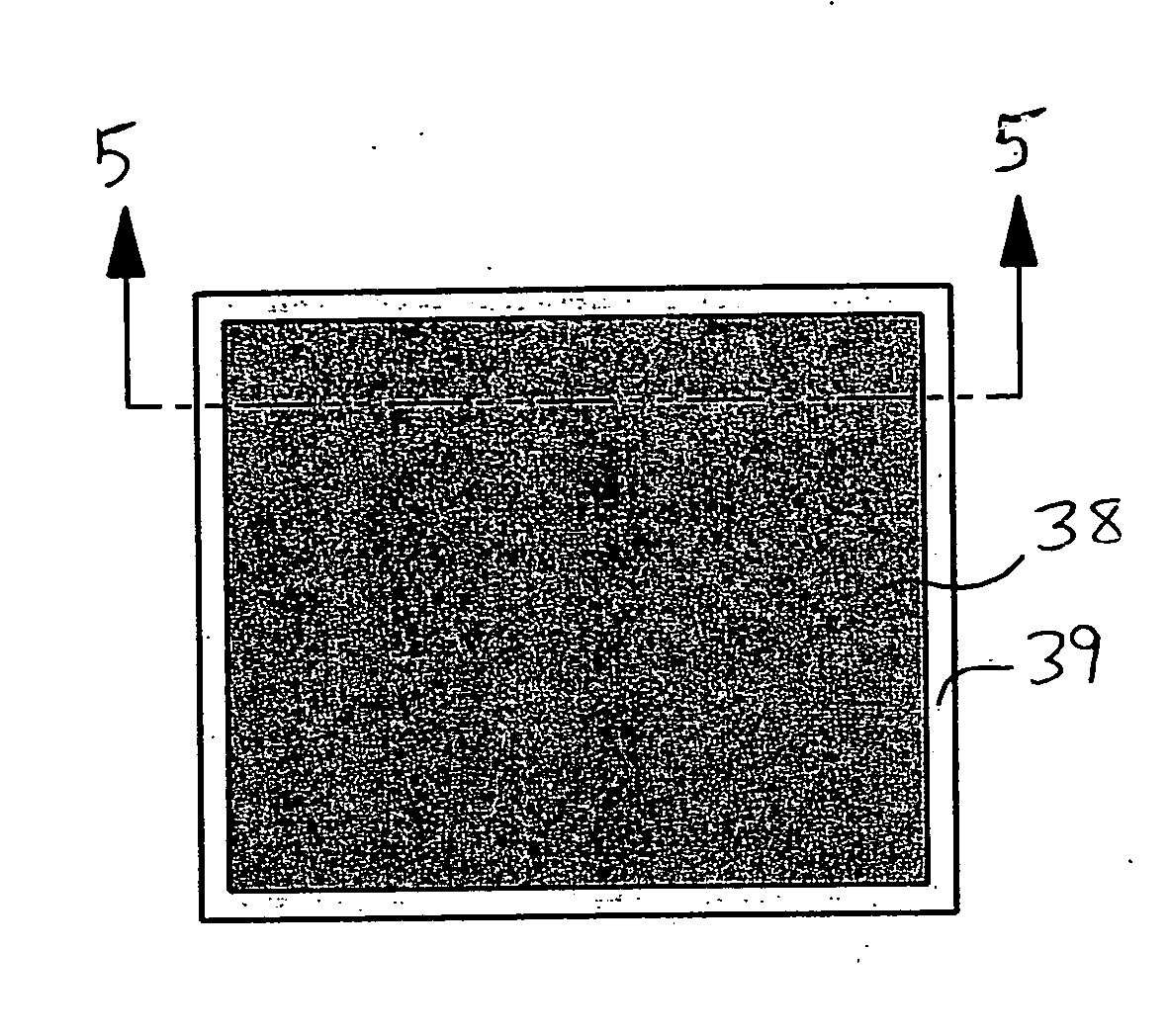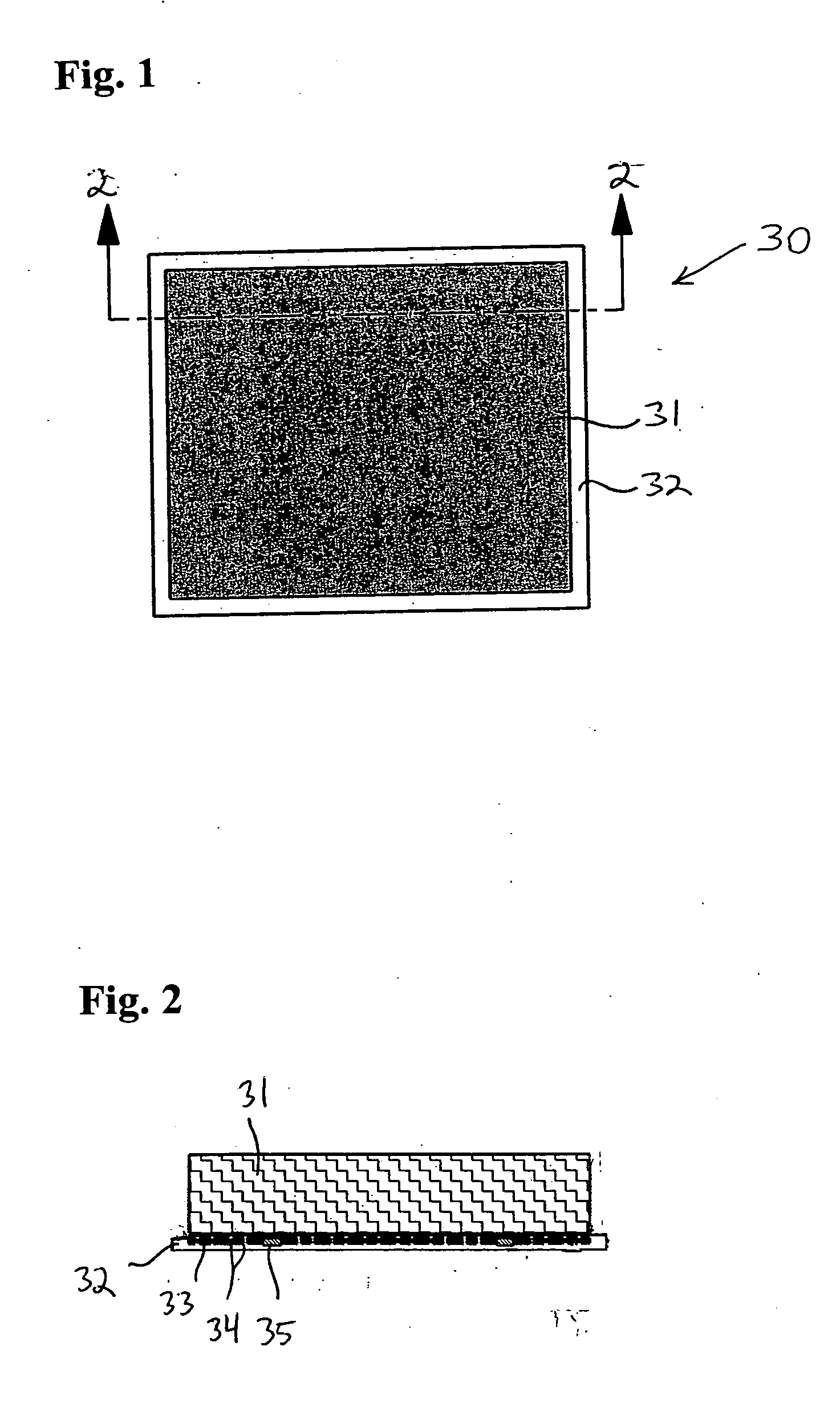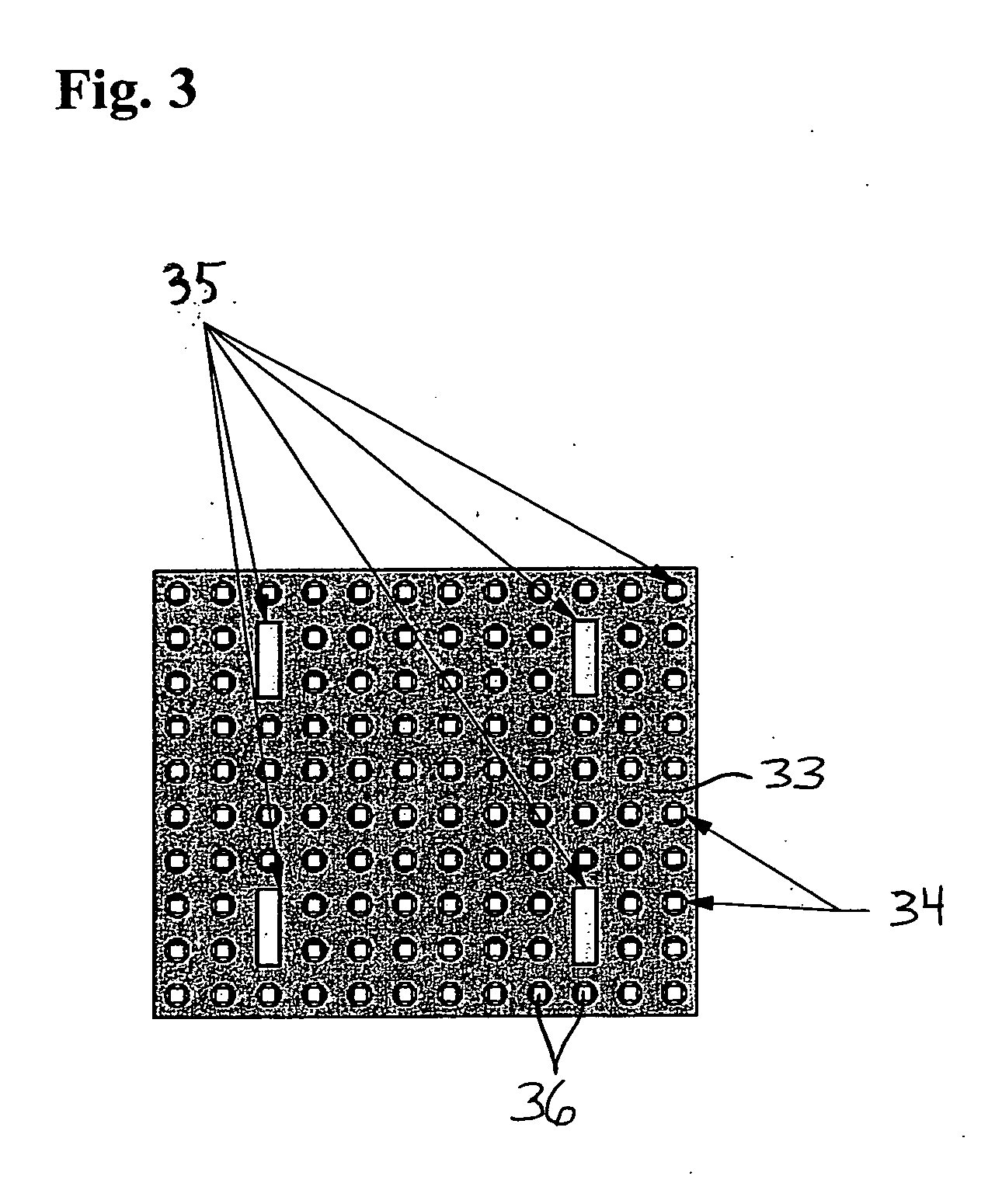Method and apparatus for dissipating heat
a technology for dissipating apparatus and heat, applied in the direction of electrical apparatus construction details, lighting and heating apparatus, laminated elements, etc., can solve the problem of increasing heat generation of components, and achieve the effect of limited heat load and difficult fabrication
- Summary
- Abstract
- Description
- Claims
- Application Information
AI Technical Summary
Benefits of technology
Problems solved by technology
Method used
Image
Examples
first embodiment
[0098] a heat dissipation device according to the present invention is depicted in FIGS. 1-3.
[0099]FIG. 1 is a front view of the heat dissipation device 30 according to the first embodiment. The heat dissipation device 30 includes a porous foam heat exchange component 31 positioned on a base 32. The porous foam heat exchange component 31 is formed of carbon foam or metallized foam (e.g., carbon or aluminum).
[0100]FIG. 2 is a cross-sectional view of the heat dissipation device 12 shown in FIG. 1 taken along line 2-2 in FIG. 1. FIG. 2 shows the base 32 of the heat dissipation device 30, as well as a base element 33 positioned within the base 32. A plurality of base element vias 34 are formed in the base element 33. In addition, a plurality of heat transfer pieces 35 are positioned in the base element 33.
[0101]FIG. 3 is a front view of the base element 33 in the heat dissipation device 30. FIG. 3 shows the base element 33 and a plurality of base element vias 34 formed in the base ele...
second embodiment
[0102] a heat dissipation device according to the present invention is depicted in FIGS. 4-6.
[0103]FIG. 4 is a front view of the heat dissipation device 37 according to the second embodiment. The heat dissipation device 37 includes a porous foam heat exchange component 38 positioned on a base 39. The porous foam heat exchange component 38 is formed of carbon foam or metallized foam (e.g., carbon or aluminum).
[0104]FIG. 5 is a cross-sectional view of the heat dissipation device 37 shown in FIG. 4 taken along line 5-5 in FIG. 4. FIG. 5 shows the base 39 of the heat dissipation device 37, as well as a base element 42 positioned within the base 39. A plurality of base element vias 43 are formed in the base element 42, and cylindrical slivers 44 are positioned in each of the base element vias 43.
[0105]FIG. 6 is a front view of the base element 42 in the heat dissipation device 37. FIG. 6 shows the base element 42, the base element vias 43 and the cylindrical slivers 44. The base 39 is ...
third embodiment
[0106] a heat dissipation device according to the present invention is depicted in FIG. 7.
[0107]FIG. 7 is a side view of the heat dissipation device 45, which includes a plurality of fiber plate heat exchange components 46 stacked as a laminate and positioned on a base 47. The fiber plate heat exchange components 46 comprise carbon fiber plates.
PUM
| Property | Measurement | Unit |
|---|---|---|
| angle | aaaaa | aaaaa |
| angle | aaaaa | aaaaa |
| angle | aaaaa | aaaaa |
Abstract
Description
Claims
Application Information
 Login to View More
Login to View More - R&D
- Intellectual Property
- Life Sciences
- Materials
- Tech Scout
- Unparalleled Data Quality
- Higher Quality Content
- 60% Fewer Hallucinations
Browse by: Latest US Patents, China's latest patents, Technical Efficacy Thesaurus, Application Domain, Technology Topic, Popular Technical Reports.
© 2025 PatSnap. All rights reserved.Legal|Privacy policy|Modern Slavery Act Transparency Statement|Sitemap|About US| Contact US: help@patsnap.com



